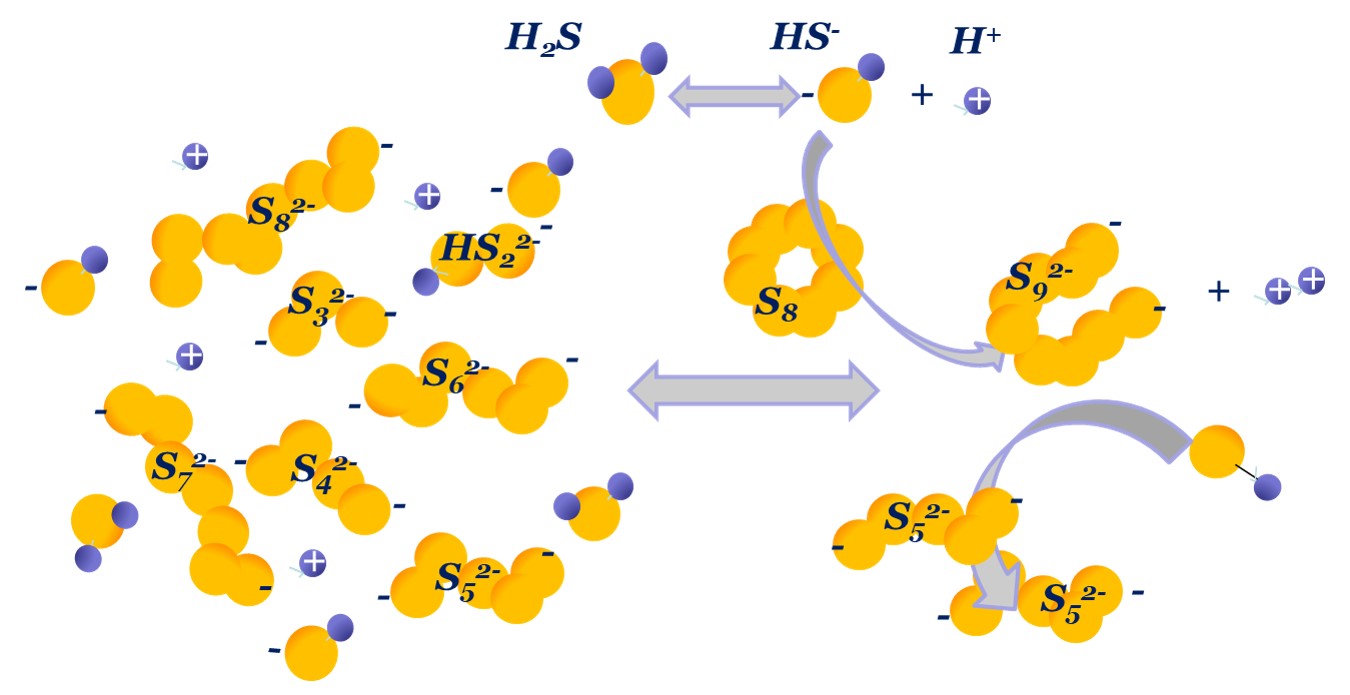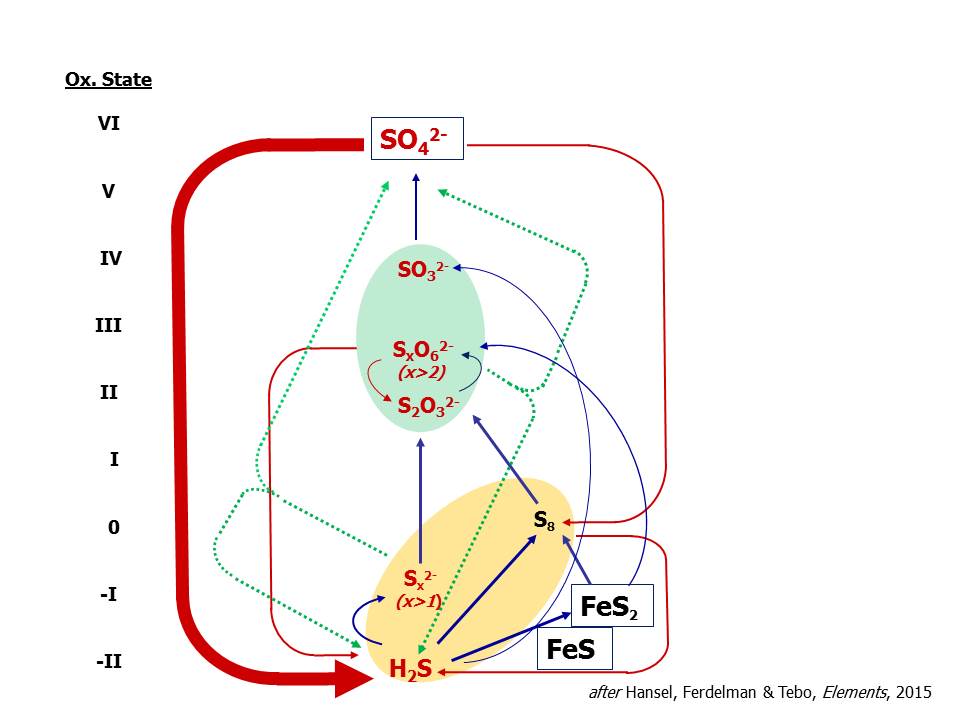- Departments
- Department of Biogeochemistry
- Biogeochemistry Group
- People
- Tim Ferdelman
- Research
- Sulfur Biogeochemistry
Biogeochemistry, microbiology and analysis of sulfur compounds

The overall driver in the sulfur cycle is the microbial mediated reduction of sulfate to hydrogen sulfide. Radiochemical, chromatographic and single-cell techniques allow us to examine sulfate reduction, sulfide oxidation and role of sulfur intermediates such as elemental suflur, polysulfides, thiosulfate, tetrathionate, and sulfite in carbon and nutrient cycles.
I have been involved in studies of marine sulfur cycling for over three decades. Recent collaborations involve investigations of sulfur cycling in permeable sediments together with M van Erk and D. deBeer in the Microsensor group (see Erk et al., 2020 Kelp Deposition...), and with H. Marchant, O. Metcalf (MPI Biogeochemistry) and M. Mussmann (U. Vienna) on interactions of the S and N cycles.
Oxygen Minimum Zone S Cycling
I recently participated in the Meteor Expedition M200 MnION to the Baltic Sea (Rostock-Rostock, March-April 2024). (R/V Meteor Reports). The Gotland, Farö and Landsort Deeps of the Baltic Sea are natural reactors for study of the reaction between upward diffusing hydrogen sulfide and the manganese oxides, and the production of these intermediate oxidation state compounds. We profiled the entire water column at all three sites, plus the Baltic Inflow transect. At both Gotland and Farö we sampled at higher resolution throughout the chemocline in conjunction with the manganese oxide sampling campaign
Denitrifying and micro-aerophilic bacterial communities that oxidize sulfide to elemental sulfur are commonly associated with sulfidic coastal bottom waters in upwelling regions such as Peru. In Applied and Environmental Microbiology [Chemolithoheterotrophy by a Novel Arcobacter Species Isolated from the Sulfide-Rich Waters off PeruCallbeck et al., 2019, Arcobacter peruensis sp.nov., a chemolithoheterotroph isolated from sulfide and organic rich coastal waters off Peru. https://aem.asm.org/content/early/2019/10/01/AEM.01344-19] former MPI Biogeochemistry doctoral student, Cameron Callbeck and colleagues from MPI, Radboud University, Nijmengen and GEOMAR Kiel isolated a novel Arcobacter species from the sulfide- and organic matter-rich waters of the Peruvian shelf. The isolate, named Arcobacter peruensis, was capable of sulfide oxidation and nitrate reduction, and depends on organic matter for growth on sulfide and nitrate. The favorable growth efficiencies of this chemolithoheterotrophic metabolism might explain why Arcobacter peruensis is able to rapidly bloom in the sulfide-rich waters off Peru.
(see also Press Release A Flexible Lifestyle)
A publication by MPI student Cameron Callbeck and colleagues in Nature Communications concerns the marine biogeochemistry, biogeography and ecophysiology of a sulfide oxidizing bacteria belonging to the gammaproteobacterial clade SUP05. As a putative sulfide oxidizing, denitrifying bacteria, its frequent and globally broad distribution in offshore non-sulfidic waters has been perplexing.
Employing a comprehensive range of oceanographic, genomic, biogeochemical and single-cell methods (nanoSIMS) we revealed a simple explanation for these reports. Briefly, SUP05 is transported offshore via mesoscale coastal circulation and continues to thrive on co-transported elemental sulfur.
Although uncultivated, we were also able to distinguish the SUP05 clade present in the Peru OMZ as a new species. We gave it the name UThioglobus perditus. The U stands for uncultivated, and perditus means lost, as in lost in the offshore waters. (See also
Cryptic cross-linkages and reactive intermediates
In an Elements contribution, Hansel, Ferdelman and Tebo, review how reactive intermediates of the oxygen, manganese and sulfur cycles may provide key cryptic cross-linkages in marine biogeochemical cycles.
